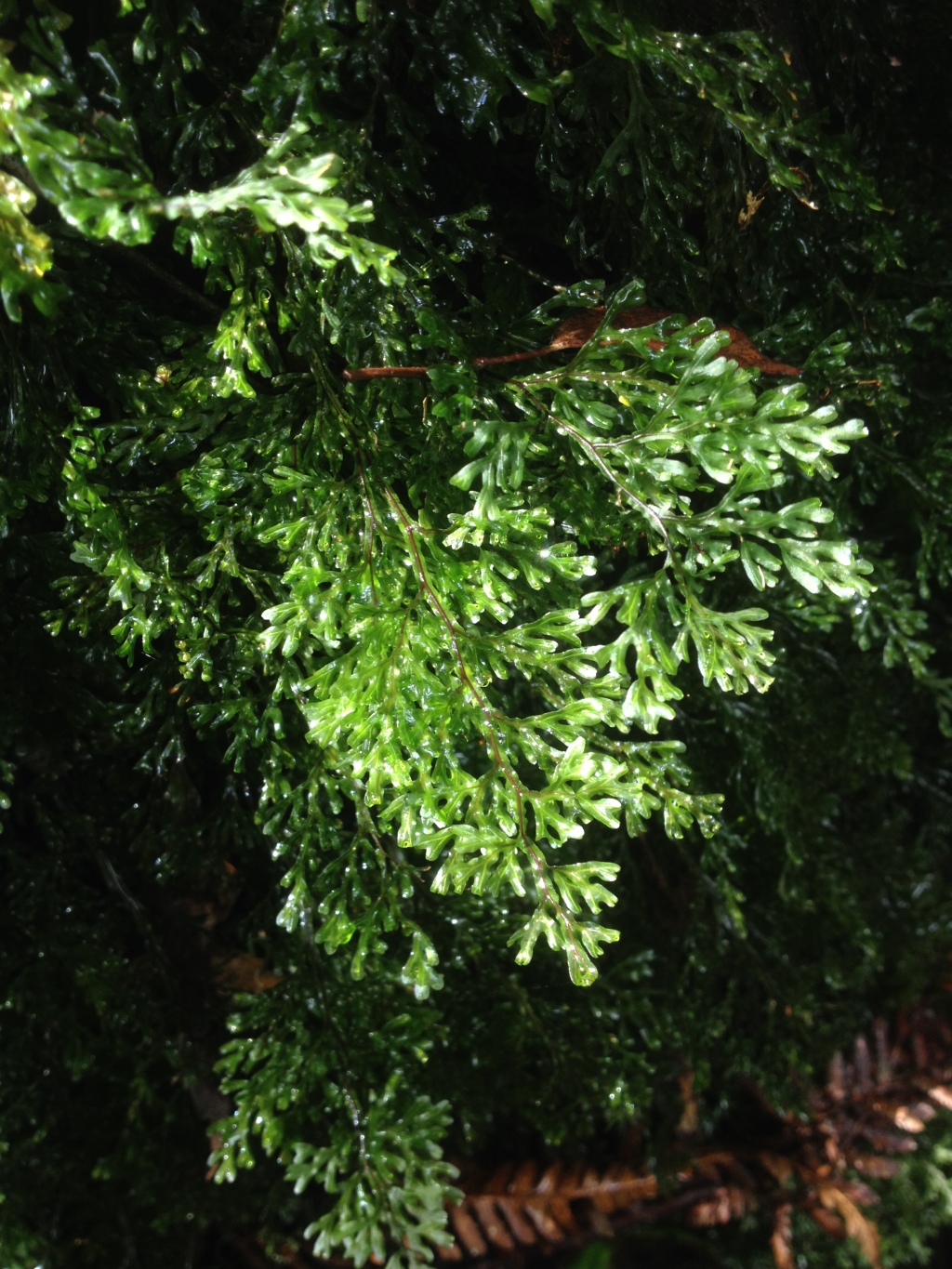Hymenophyllaceae
Small epiphytic or terrestrial ferns. Rhizome long-creeping or short, often slender to filiform, sometimes thick, hairy, with or without roots. Stipe filiform or slender, frequently winged to base. Lamina simple to variously pinnate, usually 1 cell thick (except the veins), membranous, almost transparent. Pinnae glabrous or hairy; pinnules small, mostly 1-veined; veins usually free; false veins composed of rows of thickened cells may be present. Sori marginal, terminal on pinnules or on short lateral lobes; indusium bivalvate, tubular or obconic, lips often much dilated; receptacle columnar, included within indusium or long-exserted and bristle-like. Sporangia spherical to compressed, very shortly stalked or sessile, clustered around receptacle; annulus complete, oblique or almost transverse; spores 32–420 per sporangium, tetrahedral to globose. Gametophyte ribbon-like and branching, thallose or filamentous.
A family of 2-33 genera, depending on the taxonomic treatment followed; Tindale (1963) recognizes 11 genera and 44 species in Australia, all restricted to the eastern coast of Australia (not found in WA, SA or, except for one record, NT).
Entwisle, T.J. (1994). Ferns and allied plants (Psilophyta, Lycopodiophyta, Polypodiophyta). In: Walsh, N.G.; Entwisle, T.J., Flora of Victoria Vol. 2, Ferns and Allied Plants, Conifers and Monocotyledons, pp. 13–111. Inkata Press, Melbourne.
 Spinning
Spinning

